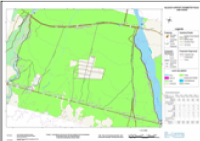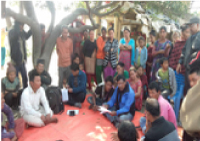


| Client: | Department of Roads |
| Funding Agency: | JICA |
| Period: | May 2017 to July 2023 |
| Consulting Association: | Nippon Koei Co. Ltd-EJEC-NCCE, Japan, GEOCE Consultants (P) Ltd, ITECO Nepal |
| Approx. Value of Services: | Yen 64.15 million, US$ 1,428,495 & NRs 368.2 million. GEOCE’s part-NRs 102 M |
| Professional Staff Input: | International (256) and National (469) person months. |
Salient Details:
Detail design and construction supervision of Nagdhunga Tunnel Construction to improve connectivity of Tribhuvan Highway with Kathmandu Valley. Basic features of the project include following construction
⦁ A road tunnel (2+688 km length, 2 lanes of 3.5 m width, median width 1.5 m at center and 0.5 m wide space on both sides for drainage facility- total carriageway 9.5 m, grade 3.5%
⦁ An evacuation tunnel parallel to main tunnel with interconnections at regular intervals
⦁ Approach roads (West 0+565 km and East 2+307 km with total 2+872 km, 2 lanes of 3.5 m width, 2 m shoulder on both sides
⦁ Six (6) box culverts
⦁ 1 overpass and 3 underpass bridges
⦁ 1 intersection structures
⦁ Toll facilities (west side 3 booths, 3 lanes each and east side 2 booths, 2 lanes each)
⦁ Control offices (tunnel management offices -West side 390 m2 and east side 300 m2)
⦁ Disposal area development (construction of roadside service station)
⦁ Transmission line 4.14 km.
Project cost: US$ 150 million.
The scope of services comprise of:
⦁ Detailed Design which include basic design of tunnel, engineering surveys and investigations, highway geometric, pavement and drainage, embankment cut and slope protection/retaining structure, intersection, main tunnel, tunnel portal, tunnel facilities inside and outside of tunnel, disposal area development, bridges and structures, road safety facility and miscellaneous works, transmission line, tender drawings, cost estimates.
⦁ Assistance for Procurement of Works
⦁ Construction supervision
⦁ Implementation of EMP, EMoP, RAP
⦁ Technology transfer on tunnel design and construction supervision
⦁ Capacity development for tunnel O & M




